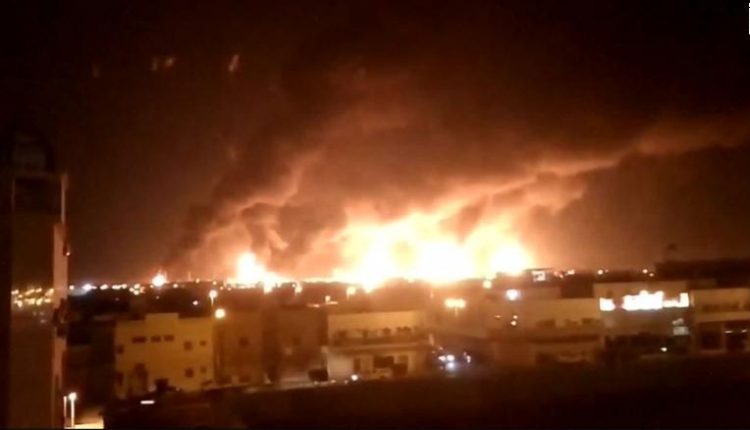Yemeni Attack on Saudi Oil Field, Game-Changer in Gulf Confrontation
YemenExtra
M.A.
US CNN published an article by Tim Lister under the title of “Game Changer in Gulf.” The article is examining the effects of several projectiles that struck the Abiqaiq plant, starting a series of fires that quickly took out nearly half Saudi’s oil production — 5% of the global daily output — and sparking fears about the security of the world’s oil supplies. It’s unclear when Abiqaiq, which is operated by Saudi giant Aramco, will fully be operational again.
Ansarullah in Yemen claimed the attack, saying that 10 drones had targeted Abiqaiq, as well as the Khurais oilfield.
The writer stated that “Ansarullah has announced that the facility was hit by ten drones targeting Abqaiq and Khurais field, but US Secretary of State Pompeo accused Iran while Iranian Foreign Minister Zarif responded that Pompeo was involved in deception, noting that blaming Iran would not end the disaster.”
Even so, the maximum range of this system, dubbed the UAV-X, would be between 740 and 930 miles (1,200 and 1,500 km), depending on wind conditions. The distance from Houthi-held parts of Yemen to Abqaiq is about 800 miles (1,300 km).
While Saudi Arabia is looking for a justification for targeting its facilities by pointing fingers at Iran, the Armed Forces spokesman in Sanaa Yahya Sere’e said the operation followed “an accurate intelligence operation and advance monitoring and the cooperation of honorable people inside the kingdom.”
Saudi Arabia has invested heavily in advanced air defense systems. Ayham Kamal at the Eurasia Group says that the “critical problem for the kingdom is structural; most of Saudi Arabia’s air defense systems are designed to defend against traditional threats and are ill-equipped to tackle asymmetrical aerial threats such as drones”, Lister reported.
This post originally ran on Almasirah English

